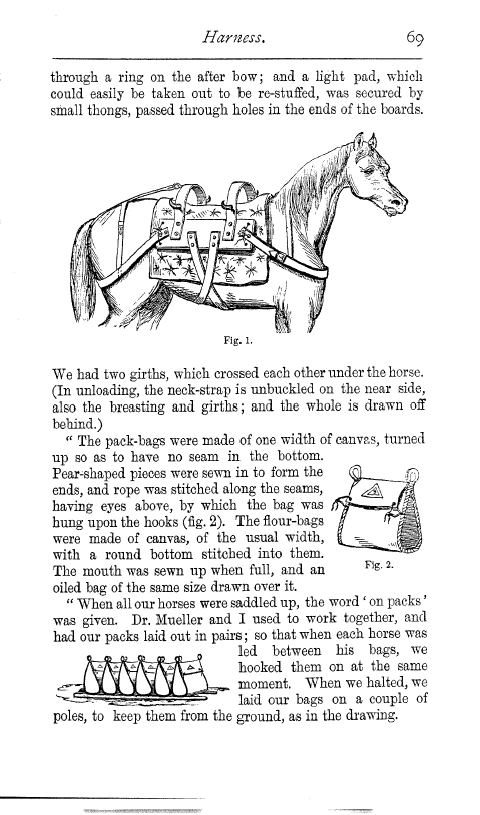Harness.
69
through a ring on the after bow; and a light pad, which could easily be taken out to be re-stuffed, was secured by small thongs, passed through holes in the ends of the boards.
Fig. 1.
We had two girths, which crossed each other under the horse. (In unloading, the neck-strap is unbuckled on the near side, also the breasting and girths; and the whole is drawn off behind.)
" The pack-bags were made of one width of canvas, turned up so as to have no seam in the bottom. Pear-shaped pieces were sewn in to form the ends, and rope was stitched along the seams, having eyes above, by which the bag was hung upon the hooks (fig. 2). The flour-bags were made of canvas, of the usual width, with a round bottom stitched into them. The mouth was sewn up when full, and an oiled bag of the same size drawn over it.
" When all our horses were saddled up, the word' on packs' was given. Dr. Mueller and I used to work together, and had our packs laid out in pairs; so that when each horse was
led between his bags, we hooked them on at the same moment. When we halted, we
`~ - laid our bags on a couple of poles, o keep em from the ground, as in the drawing.
Fig. 2.

